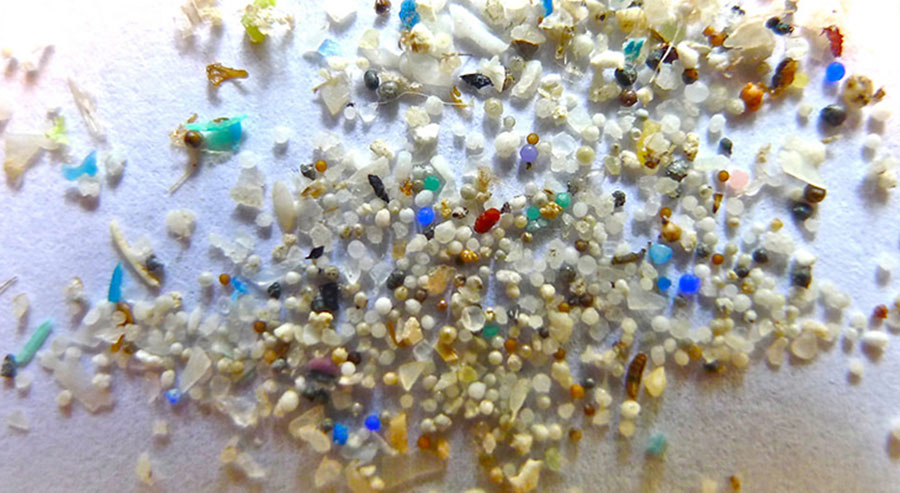Study Finds Wastewater Treatment Plants An Important Source Of Plastic Pollution in Rivers

Tiny bits of plastic pose threats to freshwater and marine ecosystems.
Oregon State University
(Inside Science) -- A new study builds evidence that wastewater treatment plants are an important source of plastic pollution to the nation's waterways. While the so-called microplastics can be hard to see, they can pick up toxic chemicals like PCBs often found in rivers. Research suggests that when fish and other organisms eat the bite-sized particles, the plastic and associated toxins can be passed up the food chain to other animals and people.
Microplastics are tiny particles of plastic 5 millimeters or smaller. They can consist of microbeads -- the small, scrubbing orbs used in hundreds of personal care products like toothpaste and soap -- as well as minuscule fibers that come out of clothes during laundering. Once they're washed down the drain, the plastics flow to water treatment systems. But they're often too small to be caught by the plant's filters and end up being discharged into rivers and streams along with treated wastewater.
In the new work, the researchers collected water samples from 10 sites in rivers in northern and central Illinois, sampling both upstream and downstream of where plants discharged treated wastewater into the waterways.
"You have to have a strong stomach and some vaccinations to do this work," joked Timothy Hoellein, an ecologist at Loyola University Chicago who presented the research Thursday at the Ocean Sciences Meeting in New Orleans, Louisiana.
Hoellein and his team found that the amount of plastic in the water spiked downstream of almost all of the treatment plants – with between 15,000 to about 4.5 million particles slipping through a single plant's filters every day.
That's "what I would think of as quite a bit of plastic for relatively small rivers," said Hoellein.
At two of the sites, however, the discharge showed no impact on plastic concentrations in the rivers. Operators at those plants suggested that the use of sand filters during treatment could be trapping the fragments, said Hoellein, making the technique a "potential practical management option."
The researchers categorized the plastic samples by size and type, which revealed that the proportion of microbeads compared to the other plastic fragments was higher at the downstream sites.
Last December, President Obama signed a bipartisan bill – the Microbead-Free Waters Act of 2015 – that prohibits selling and distributing of products containing the tiny spheres. Companies have until July 2017 to comply.
Meanwhile, large amounts of plastics are continuing to make their way to the ocean. A study in Science from last year estimates that more than eight million metric tons of plastics end up in the world's oceans each year. Microplastics contribute to that total, but scientists are still trying to understand where and what the major sources of those particles are.
Figuring that out will require more communication between freshwater and marine scientists, said Hoellein.

